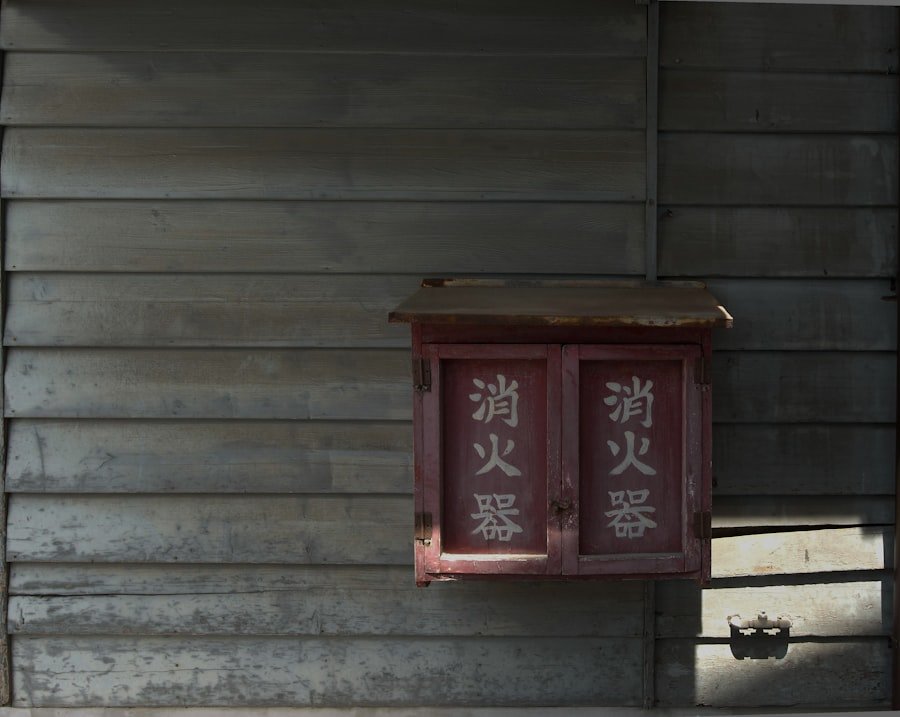Chinese characters, with their intricate designs and profound meanings, are not merely a means of communication; they embody a rich tapestry of cultural heritage and philosophical thought. At the heart of this ancient writing system lies the concept of energy flow, a principle that resonates deeply within Chinese philosophy and traditional practices. The characters themselves are seen as vessels of energy, each stroke and curve contributing to a dynamic interplay that reflects the universe’s rhythm.
This understanding of energy flow is not only essential for grasping the essence of the characters but also for appreciating the broader cultural context in which they exist. The notion of energy flow, or “Qi” as it is known in Chinese, permeates various aspects of life, from traditional Chinese medicine to martial arts and feng shui. In the realm of language, this concept manifests in the way characters are constructed and interpreted.
Each character is a microcosm of energy, encapsulating ideas, emotions, and natural phenomena. As we delve deeper into the structure and significance of these characters, we uncover a world where language transcends mere words, becoming a conduit for understanding the flow of energy that connects all living things. Spaces are filling up fast! Register for Chinese classes at the LC Chinese School in Oslo today.
Table of Contents
ToggleSummary
- Chinese characters are not just symbols, but also convey the concept of energy flow in their structure and formation.
- The basic structure of Chinese characters is connected to the flow of energy, with strokes and radicals representing the movement of energy within the character.
- Traditional Chinese medicine has influenced the formation of Chinese characters, with the characters reflecting the principles of balance and harmony in energy flow.
- Strokes and radicals in Chinese characters are significant as they reflect the flow of energy, with each stroke contributing to the overall balance and harmony of the character.
- Calligraphy and brushstrokes play a crucial role in conveying the movement of energy within Chinese characters, adding to the holistic nature of their representation.
The basic structure of Chinese characters and its connection to energy
The basic structure of Chinese characters is both fascinating and complex, comprising various components that work together to convey meaning. Each character is typically made up of strokes, which are the fundamental building blocks. These strokes are not arbitrary; they are imbued with intention and purpose, reflecting the flow of energy that underlies their formation.
The arrangement of these strokes can influence how the character is perceived and understood, much like how energy flows through different pathways in nature. Moreover, the structure of Chinese characters often mirrors natural forms and phenomena, further reinforcing their connection to energy. For instance, many characters are derived from pictographs that represent objects or concepts found in the natural world.
This relationship between form and meaning highlights how energy is not only a theoretical concept but also a tangible aspect of existence. As we explore the intricacies of character formation, we begin to see how each stroke contributes to a larger narrative about energy flow, creating a harmonious balance between form and function.
The influence of traditional Chinese medicine on the formation of Chinese characters

Traditional Chinese medicine (TCM) has had a profound impact on the development and understanding of Chinese characters. The principles of TCM are deeply rooted in the concept of Qi, which is believed to flow through meridians in the body, influencing health and well-being. This understanding has shaped the way certain characters are formed and interpreted.
For example, characters related to health often incorporate elements that signify balance and harmony, reflecting the holistic approach of TCM. Furthermore, many characters associated with medical practices or natural remedies are constructed using radicals that denote specific bodily functions or elements. This connection between language and medicine illustrates how Chinese characters serve as a bridge between physical health and energetic balance.
By examining these characters through the lens of TCM, we gain insight into how language can encapsulate complex ideas about energy flow and its impact on human life.
The significance of strokes and radicals in Chinese characters and their relation to energy flow
Strokes and radicals play a crucial role in the formation and interpretation of Chinese characters, serving as essential components that convey meaning and energy. Strokes are the individual lines that make up a character, while radicals are components that often provide clues about the character’s meaning or pronunciation. Together, they create a rich tapestry of information that reflects the flow of energy within each character.
The significance of strokes extends beyond their visual representation; they embody movement and rhythm, much like the flow of Qi in nature. Each stroke can be seen as a manifestation of energy, contributing to the overall dynamism of the character. Similarly, radicals often represent elemental forces or concepts that resonate with specific energies.
For instance, a radical associated with water may evoke feelings of fluidity and adaptability, while one linked to fire might suggest warmth and transformation. This intricate relationship between strokes, radicals, and energy flow underscores the depth of meaning embedded within Chinese characters.
The concept of balance and harmony in Chinese characters and its reflection of energy flow
Balance and harmony are central themes in both Chinese philosophy and the construction of Chinese characters. The arrangement of strokes within a character often reflects an underlying sense of equilibrium, mirroring the natural order found in the universe. This emphasis on balance is not merely aesthetic; it speaks to the very essence of energy flow, which thrives in environments where harmony prevails.
In many ways, Chinese characters serve as visual representations of these philosophical concepts. Characters that embody balance often feature symmetrical designs or harmonious proportions, reinforcing the idea that energy flows most freely when there is equilibrium. This principle extends beyond individual characters to encompass entire phrases or texts, where the interplay between words creates a rhythmic flow that resonates with readers on an energetic level.
By appreciating this connection between balance, harmony, and energy flow, we gain a deeper understanding of how language can reflect the fundamental principles governing existence.
The role of calligraphy and brushstrokes in conveying the movement of energy in Chinese characters

Calligraphy is an art form that elevates the writing of Chinese characters to new heights, transforming them into expressions of beauty and emotion. The brushstrokes used in calligraphy are not merely tools for writing; they are conduits for conveying energy and movement. Each stroke is imbued with intention, reflecting the calligrapher’s emotional state and connection to the character being formed.
The fluidity and grace of brushstrokes capture the essence of Qi as it flows through each character. A well-executed stroke can evoke feelings of strength, gentleness, or vitality, depending on its form and execution. This dynamic interplay between brushwork and energy creates a visual language that transcends words, allowing viewers to experience the movement of energy through art.
In this way, calligraphy becomes a powerful medium for expressing not only linguistic meaning but also the deeper currents of life that connect us all.
The representation of natural elements and their energy in Chinese characters
Chinese characters often draw inspiration from natural elements, reflecting a profound connection between language and the environment. Many characters are derived from pictographs that depict objects or phenomena found in nature—such as mountains, rivers, trees, and animals—each embodying specific energies associated with those elements. This relationship highlights how language can serve as a reflection of the world around us.
For instance, the character for “water” (水) is composed in such a way that it visually suggests flowing liquid, evoking feelings of adaptability and fluidity inherent in water itself. Similarly, characters representing fire (火) or earth (土) encapsulate their respective energies through their forms. By understanding these connections between natural elements and their representation in language, we gain insight into how Chinese characters serve as vessels for expressing the dynamic interplay between humanity and nature.
The connection between the meaning of Chinese characters and the flow of energy
The meanings embedded within Chinese characters are intricately linked to the concept of energy flow. Each character carries with it a wealth of associations that resonate with specific energies or qualities. For example, the character for “peace” (安) combines elements that suggest stability and safety—qualities essential for fostering a harmonious flow of energy in one’s life.
This connection between meaning and energy extends beyond individual characters to encompass phrases and idioms within the language. Many expressions reflect cultural values related to balance, harmony, and well-being—principles that resonate deeply with the flow of Qi. By exploring these connections, we uncover a rich landscape where language becomes a tool for navigating life’s complexities while remaining attuned to the energetic currents that shape our experiences.
The use of Chinese characters in feng shui and its relation to energy flow
Feng shui, an ancient practice rooted in understanding energy flow within spaces, utilises Chinese characters as powerful symbols to enhance harmony and balance in our environments. In feng shui philosophy, certain characters are believed to attract positive energies or dispel negative ones when placed strategically within a space. This practice underscores how language can influence our surroundings by harnessing the inherent energies associated with specific characters.
For instance, placing a character representing prosperity (富) in a prominent location may invite abundance into one’s life by aligning with positive Qi flows. Similarly, characters symbolising health (健康) or happiness (快乐) can be used to create an atmosphere conducive to well-being. By integrating these symbols into our living spaces, we engage with the energetic dimensions of language while fostering environments that support our aspirations.
The impact of Chinese characters on the perception and understanding of energy in Chinese culture
Chinese characters have profoundly shaped how individuals perceive and understand energy within their culture. The intricate relationship between language and philosophy has fostered a worldview where everything is interconnected through energetic flows. This perspective influences various aspects of life—from health practices to artistic expressions—creating a holistic understanding that transcends mere words.
As individuals engage with Chinese characters daily—whether through reading literature or practising calligraphy—they become attuned to the subtle energies embedded within language itself. This awareness cultivates a deeper appreciation for life’s interconnectedness while encouraging mindfulness about how we interact with our environment. In this way, Chinese characters serve as both linguistic tools and gateways to exploring profound philosophical concepts related to energy flow.
The holistic nature of Chinese characters and their reflection of the flow of energy
In conclusion, Chinese characters represent more than just symbols for communication; they embody a holistic understanding of life that reflects the intricate flow of energy permeating our existence. From their basic structure to their connection with traditional practices like medicine and feng shui, these characters encapsulate profound philosophical insights about balance, harmony, and interconnectedness. As we explore this rich tapestry woven from strokes, radicals, natural elements, and cultural meanings, we come to appreciate how language can serve as a powerful conduit for understanding life’s complexities.
The courses offered at LC Chinese School in Oslo provide an excellent opportunity for individuals interested in delving deeper into this fascinating world. Through structured learning experiences focused on both language acquisition and cultural exploration, students can engage with these concepts while developing their proficiency in reading and writing Chinese characters. By embracing this holistic approach to learning about Chinese characters at LC Chinese School, students not only gain linguistic skills but also cultivate an appreciation for the energetic dimensions embedded within language itself—an invaluable asset in navigating both personal growth and cultural understanding in today’s interconnected world.







